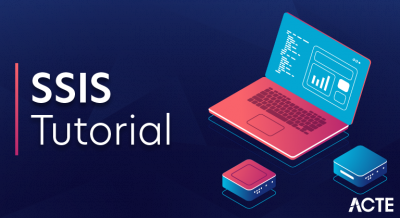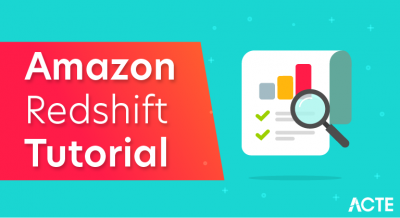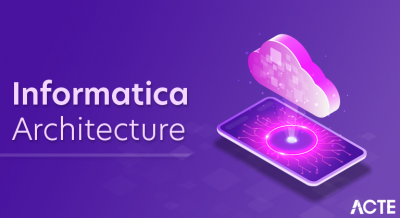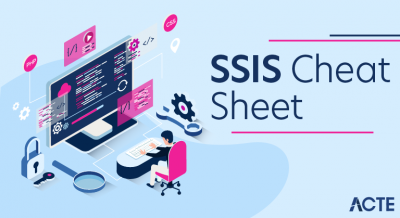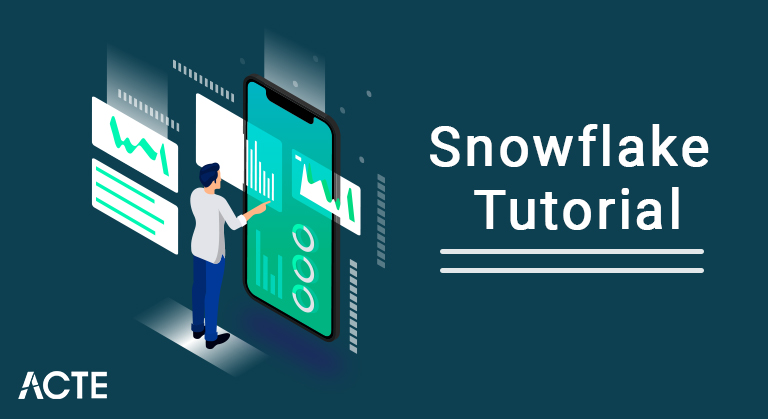
- Introduction
- What is a Snowflake?
- What is a Snowflake information stockroom?
- Snowflake Architecture
- Validation in Snowflake
- Associating with Snowflake
- Stacking Data into Snowflake
- Snowflake Cloud Data Warehouse Benefits
- Cloud administration layer
- Benefits of the virtual distribution
- Snowflake Certification Details
- Conclusion
Introduction:-
In this instructional exercise, we will go over the nuts and bolts of Snowflake, acquainting you with the item yet additionally to the various elements which makes it contrast its rivals. Snowflake is accessible on numerous cloud stages, however in this tip we’ll utilize the Azure cloud stage. Snowflake is an overseen administration; set-up and charging go through Snowflake. It acts a piece like a discovery, you don’t actually see which cloud stage is utilized. This likewise implies anyway you can’t utilize any Azure credits to play with Snowflake. You can anyway begin a 30-day preliminary with $400 worth of credits to track.
What is a Snowflake?
Snowflake Inc., situated in San Mateo, California, is an information warehousing organization that utilizations distributed computing. It enables organizations to oversee and decipher information by using cloud-based equipment and programming. Beginning of Snowflake has been facilitated on Amazon S3, Microsoft Azure starting around 2018, and Google Cloud Platform beginning.
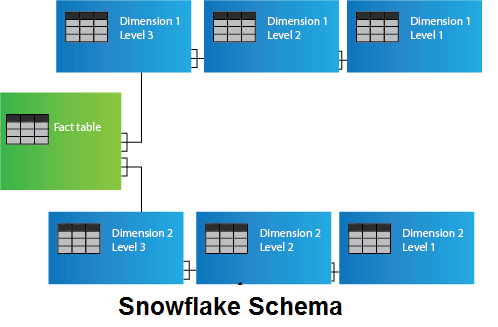
- Snowflake is notable for its not difficult to utilize interface. With the framework, you can find solutions rapidly, and you can immediately or on the fly twist up or down high computational groups of any size for pretty much any client or measure of work without interfering with different assignments.
- No compelling reason to stress over arrangement, programming overhauls, mistakes, or increase your framework as your information bases and client base develop. Snowflake currently claims to help present day highlights like auto-scaling stockroom size, auto-suspends, enormous information jobs, and information sharing.
- When utilizing Snowflake with an information lake, you can set aside cash by compacting, parceling, and changing your information over to Apache Parquet prior to stacking.
- To accomplish high productivity, you would not need to stress over getting sorted out, evening out, or altering multi-group frameworks. For instance, Snowflake upholds computerized inquiry improvement.
Why Snowflake?
The snowflake is considered due to the accompanying reasons. They are:
What is a Snowflake information distribution center?
Snowflake is the principal information stockroom as an assistance cloud-based examination data set. It is viable with famous cloud stages like AWS, Azure, and Google. So on the grounds that the framework is totally founded on open cloud foundation, there is no product or equipment to introduce, arrange, or manage.It’s great for information warehousing, information designing, information lakes, information science, and creating information applications. Its design and information sharing capacities, then again, put it aside.
What is a Snowflake information stockroom?
Snowflake is the first investigation information base worked with the cloud and conveyed as an information stockroom as an assistance. It can run on well known suppliers like AWS, Azure, and Google cloud stages. There is no equipment (virtual or physical) or programming expected to introduce, arrange, and make due, totally runs on open cloud foundation. It’s great for information warehousing, information designing, information lakes, information science, and creating information applications. In any case, what makes it amazing is its engineering and information sharing capacities.
Snowflake Architecture:-
Snowflake engineering is worked for the cloud. Its exceptional multi-group shared information design conveys the presentation, simultaneousness, and versatility that associations require. It handles all parts of verification, asset the executives, advancement, information security, design, accessibility, and then some. Snowflake highlights figure, stockpiling, and worldwide help layers which are truly isolated yet legitimately coordinated.
The Snowflake engineering is planned for distributed computing. Its unmistakable multi-group imparted information engineering gives associations to the necessary presentation, simultaneousness, and versatility. From verification to asset the executives, streamlining, information insurance, design, and accessibility, it handles everything. Snowflake has particular figure, stockpiling, and worldwide help layers.
Snowflake design is particular from different sorts of engineering, for example, Shared plate models utilize different applications to get to shared information on a solitary stockpiling framework, while Shared nothing structures store a piece of information on every information distribution center hub. Snowflake joins the advantages of the two stages in a unique and inventive plan. Snowflake frameworks questions with tremendously equal handling register groups, for every hub centering in at least one fields.
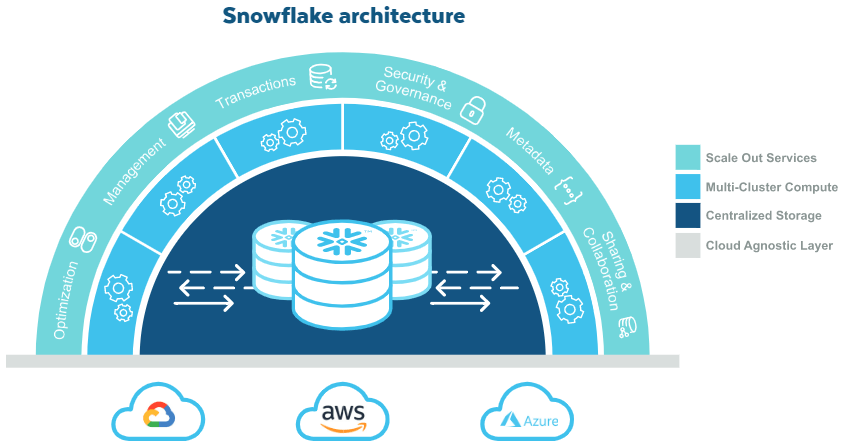
- Cloud administration layer
- Data set inquiry layer and
- Capacity layer
Here we will investigate the snowflake design in a more definite manner.
The three layers of snowflake design are:
Capacity layer:
Snowflake separates the information into various miniature squares that are arranged and dense properly. It stores information in a columnar organization. Information is facilitated in the server and works as a common plate model, simplifying information the board. In the common nothing model, this guarantees that clients don’t need to stress over information appropriation across different hubs.
To extricate data for question handling, figure hubs speak with the capacity layer. Since the capacity layer is independent, we just compensation for the normal month to month stockpiling use. Since Snowflake is facilitated in the cloud, stockpiling is versatile and charged month to month founded on use per TB.
- Data set Storage
- Inquiry Processing
- Cloud Services
How about we see how Snowflake varies from other conventional structures?
Shared plate structures utilize numerous hubs for getting to shared information on a solitary stockpiling framework, and the Shared nothing designs store a piece of information in every hub of the information distribution center. Snowflake consolidates the advantages of the two stages in an inventive and new plan. Snowflake processes the questions utilizing MPP (hugely equal handling) figure groups, where every hub in the bunch stores part of the whole dataset locally.
Structurally, the snowflake information stockroom comprises of three key layers:
#1 Database stockpiling in Snowflake
Snowflake stores all information in data sets. A data set is a sensible gathering of articles, comprising essentially of tables and perspectives, characterized into at least one patterns. We can store any sort of organized or semi-organized information in Snowflake, and every one of the assignments connected with information are taken care of through SQL question tasks. The basic filesystem in Snowflake is overseen by S3 in Snowflake’s record, where information is scrambled, packed, and dispersed to upgrade the presentation.
#2 Query Processing in Snowflake
Snowflake processes the inquiries utilizing cs, where each virtual warehouse(or group) can acquire every one of the information in the capacity layer, then, at that point, run independently, so the stockrooms don’t share or go after register assets. Virtual Warehouses are really utilized with the end goal of information stacking or running questions and can do both of these errands all the while. A virtual stockroom can be increased or down with next to no personal time or annihilation.
#3 Cloud administrations in Snowflake
The administrations layer arranges and handles any remaining administrations in Snowflake, including meetings, encryption, SQL accumulation, and the sky is the limit from there. It dispenses with the manual information warehousing and tuning necessity. Administrations in this layer include:
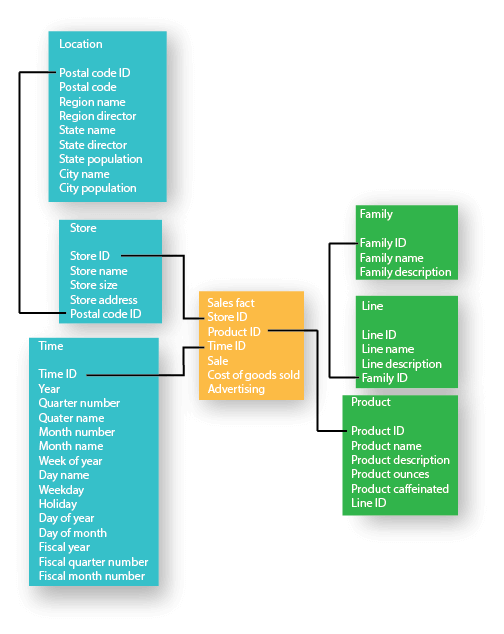
Validation in Snowflake:-
- Framework the executives
- Metadata the executives
- Question parsing and enhancement
- Access control
By plan, this large number of layers are freely scaled and are repetitive.
To realize how the various layers cooperate, we should comprehend the lifecycle of a question.
In the wake of interfacing the Snowflake through one of the upheld customers and beginning a meeting, the principal virtual distribution center presents an inquiry and administrations layer confirms the approved admittance information in the data set, and later executes the activities characterized in the question, and afterward makes a streamlined question plan. Then, the administrations layer sends question execution guidelines to the virtual distribution center, which apportions assets in light of the fact that any required information from the capacity layer can execute the inquiry. The outcomes are gotten back to the client.
In this beneath segment of the Snowflake information base instructional exercise, you’ll figure out how to interface and stacking information into the Snowflake information stockroom.
Associating with Snowflake:-
- Electronic User Interface
- ODBC and JDBC drivers
- Order line customers
- Local connectors
- Outsider connectors, for example, ETL instruments and BI devices
Snowflake can be associated with different administrations in numerous ways:
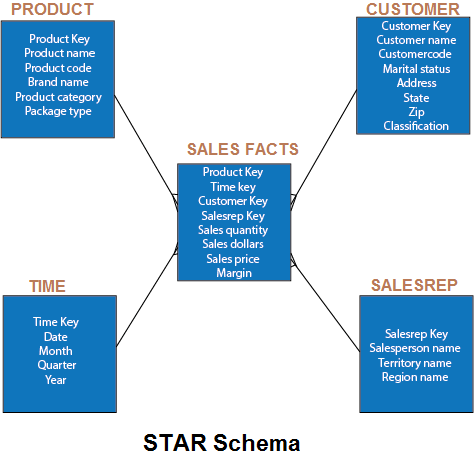
Stacking Data into Snowflake:-
- SnowSQL for mass stacking
- Snowpipe to mechanize mass stacking of information
- WebUI for restricted information
- Outsider devices to mass burden information from outer sources
This part will acquaint you with the basics of stacking information into Snowflake. Fundamentally, Snowflake upholds four choices for information stacking.
In the first place, we should see with SnowSQL.
1. SnowSQL for Build Loading
Mass stacking of information is acted in two stages, stage 1 is arranging records, and stage 2 is stacking information. Here we’ll zero in on stacking information from CSV records.
Organizing the documents – Staging records implies transferring information documents to where Snowflake can get to it. Then, load your information from stage documents into tables. Snowflake permits you to arrange documents on inner areas called stages. Interior stages give secure capacity of information documents without relying upon any outside areas.
Stacking the information – A virtual distribution center is expected to stack information to a snowflake. The distribution center concentrates information from each record and embeds it as columns in the table.
We’ll see a SnowSQL SQL customer stacking CSV records from a nearby machine into a table called Contacts in the demo data set demo_db. CSV records. We’ll involve the name in the inside arranging to store the records prior to stacking.
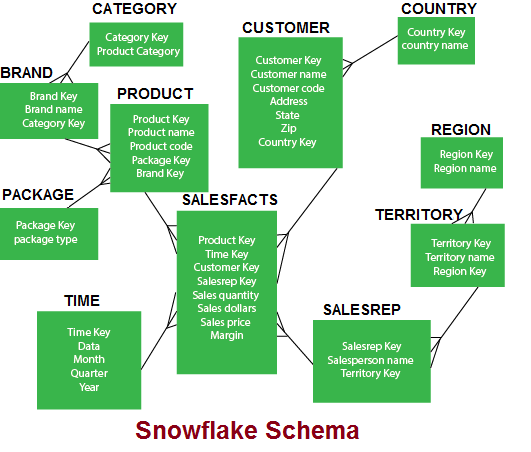
- The tables were made utilizing the accompanying SQL.
- Then, make an inside stage called csvfiles.
- PUT order to organize the records in csvfiles. This order utilizes a trump card contacts0*.csv to stack various documents, @ image characterizes where to organize the records – for this situation, @csvfiles.
- To affirm that the CSV documents have been organized, utilize the LIST order.
- To stack the records from the arranged documents into the CONTACTS table, determine a virtual stockroom to utilize.
- Load the organized documents into a Snowflake table.
- INTO characterizes where the table information to be stacked, PATTERN indicates the information documents to load, and ON_ERROR illuminates the order when it experiences the blunders.
- In the event that the heap was fruitful, you can now inquiry your table utilizing SQL.
Utilize the demo_db data set
2. Snowpipe
As we examined before in the post, for mass stacking information in Snowflake, we can likewise utilize Snowpipe explicitly from records arranged in outside areas. Snowpipe utilizes COPY order with extra elements that let you computerize the cycle. It utilizes outer register assets to consistently stack the information and wipes out the requirement for a virtual stockroom.
3. Outsider instruments – ETL/ELT
For mass stacking of information, outsider instruments like ETL/ELT can likewise be utilized. Snowflake upholds a steadily extending extent of the environment of utilizations and administrations for stacking information from a wide scope of outside sources.
4. Web Interface
The last choice for stacking information is the web Interface. In this, essentially select the table you need to pick and tap the heap button, by this, you can stack a restricted measure of information into Snowflake. It works on stacking by consolidating both the arranging and stacking information into a solitary activity and consequently erases organized records in the wake of stacking.
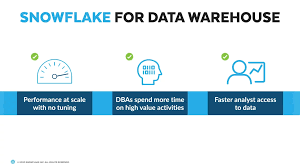
Snowflake Cloud Data Warehouse Benefits:-
#1) Effortless use
Snowflake is a general basic and natural point of interaction, which permits you to load and handle the information rapidly. It addresses issues utilizing its excellent multi-group design.
#2) Performance and speed
Cloud’s flexible nature empowers you to stack information quicker or run high volumes of questions here and there. You can up or downsize the virtual stockroom to exploit extra figure assets and pay for the main time utilized. The snowflake stage guarantees that the inquiry is handled at an ideal rate with cutthroat arrangements.
#3) Available instruments
Utilizing an assortment of instruments like scene, PowerBI, and so forth, can assist you with running inquiries against enormous datasets.
#4 Seamless information sharing
Snowflake’s engineering permits consistent information sharing for any information client.
#5 Cost-compelling
The Snowflake interface cuts off inactive time and just considers the utilization time. Both the figuring and capacity cost must be paid independently in this expense streamlined stage. Through the compacting and dividing process, you can save an exorbitant cost.
#6 Elasticity and adaptability
It offers higher adaptability, openness, flexibility, and worth. The client can involve both the stockroom and the question administrations in similar information lake. As far as utilization, the Snowflake is more adaptable, as it tends to be utilized just when it is required.
#7 Supports various information designs
Snowflake upholds different configurations like XML, JSON, and then some. It runs with any sort of organized, semi-organized, and unstructured information to resolve normal issues of taking care of incongruent information types which exist in a solitary information stockroom.
#8 Scalability
Snowflake upholds moment information distribution center scaling for taking care of simultaneousness bottlenecks during appeal periods. It scales without the need to rearrange information which can be a huge interruption to end-clients.
The Snowflake information base is a cloud information stockroom offering which is accessible on Azure, yet in addition on AWS and the Google Cloud stage. Conversely, with different information stockroom administrations, Snowflake has been assembled only for the cloud. Sky blue SQL Data Warehouse has establishes in SQL Server Parallel Data Warehouse which was an on-premises arrangement. Since it’s been worked for the cloud just, Snowflake exploits specific cloud standards, for example, the manner in which it handle stockpiling involving mass stockpiling for instance. Snowflake positions itself as a “no-administration” information distribution center, which means it’s not difficult to set-up, design and regulate. Next to zero specialized abilities are needed to work with Snowflake, beside some SQL information maybe.
Snowflake is a seriously youthful organization, however it has been becoming consistently throughout the most recent years and it has been acquiring portion of the overall industry. It has been recorded as a pioneer for three continuous years in the Gartner Magic Quadrant for information the board answers for investigation.
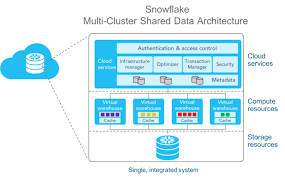
Cloud administration layer:-
- At the point when an enlistment demand is made, it should go through this layer. Snowflake questions are shipped off the enhancer in this layer and afterward sent to the Compute Layer for inquiry handling.
- This layer stores the metadata needed to advance a question or channel information.
This layer is the place where each of the exercises that happen across Snowflake, like confirmation, security, metadata the board of the stacked information, and question analyzer, occur.
Here is a little model how administrations are kept up with and took care of in this layer. They are:
Information base inquiry layer:
For question execution, Snowflake utilizes the “Virtual Warehouse.” Snowflake is the layer that isolates the inquiry handling layer from the plate stockpiling. Questions in this layer run on information from the capacity layer.
Virtual Warehouses are MPP advanced groups comprising of different hubs with CPU and Memory given by Snowflake on the cloud. Snowflake permits the making of numerous Virtual Warehouses for an assortment of prerequisites in view of jobs. Each virtual distribution center can utilize a solitary stockpiling layer. A virtual Warehouse, by and large, has its own free register group and doesn’t communicate with other virtual Warehouses.
Benefits of the virtual distribution:-
- Virtual Warehouses can be started or ended whenever, and they can likewise be scaled without influencing running questions.
- They can likewise be set to auto-suspend or auto-continue, and that implies that distribution centers are suspended after a specific time of dormancy and afterward continued when an inquiry is submitted.
- They can likewise be set up to auto-scale with a min and max succession length, so for instance, we can set an insignificant degree of 1 and a furthest constraint of 3 so Snowflake can order somewhere in the range of 1 and 3 multi-group distribution centers in light of the heap.
- Snowflake charges for capacity and virtual stockroom independently, and these three layers scale autonomously. The administrations layer is overseen inside prepared figure hubs and in this manner isn’t charged.The Snowflake design has the advantage of permitting us to gauge any one layer independently of the others.
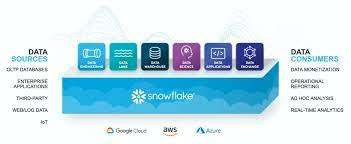
Snowflake Certification Details:-
- The expense of the SnowPro center confirmation test is $175.
- The span of this SnowPro center certificate test is 2hours.
- The passing score of this SnowPro center certificate test is 80%.
- The SnowPro accreditation test is accessible in English and Japanese.
1) SnowPro Core Certification-
The SnowPro center confirmation represents your capability for applying center aptitude in executing and relocating to Snowflake. A snow center guaranteed proficient will have a total comprehension of Snowflake like a cloud information stockroom and will have the information for planning and overseeing versatile and secure Snowflake expectations to lead the business arrangements.
- The expense of the SnowPro Advanced: Architect confirmation test is $375 per endeavor.
- The SnowPro Advanced
- The draftsman test contains 60 various decision questions. This test comprises of 60% information based inquiries and 40% ability based inquiries.
- The span of the SnowPro Advanced: Architect test is 90minutes.
- This confirmation test is accessible in English as it were.
2) SnowPro Advanced: Architect-
The fundamental goal of this accreditation test is to survey a singular’s capability in Snowflake design standards. A SnowPro Advanced: The planner will have capability related with the turn of events, plan, and sending of the snowflake arrangements.
- Snowflake Architecture
- Snowflake Account and Protection
- Snowflake Storage and Security
- Information Cloud
- Information Movement
- Semi-organized
Following Subject regions are shrouded in this accreditation test:
Conclusion:-
Cloud Data warehousing is acquiring enormous fame these days, and arrangements like Snowflake are one of the successful instruments over other customary based arrangements. By fusing Snowflake into your business, organizations can further develop their exhibition and gauge future development. Was this Snowflake Tutorial supportive for your total agreement? Post your criticism remarks in the segment underneath.


